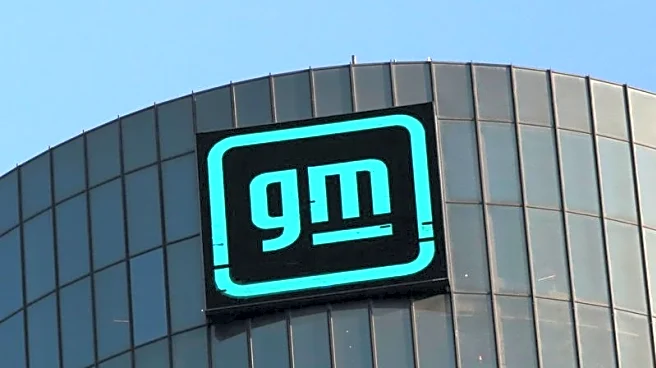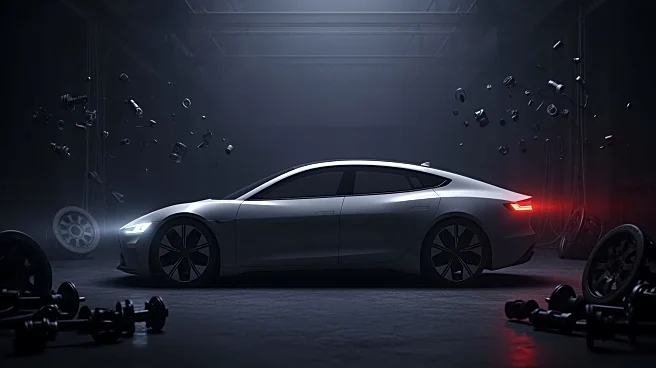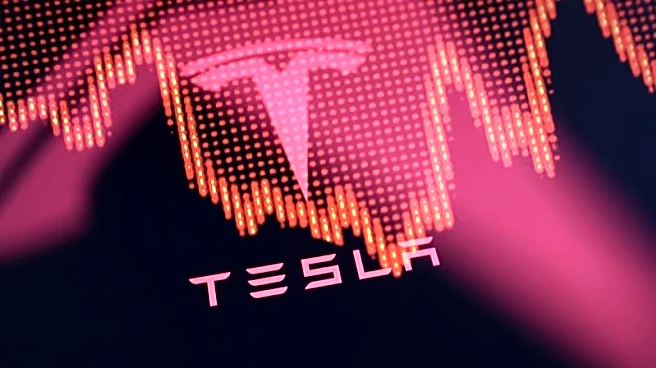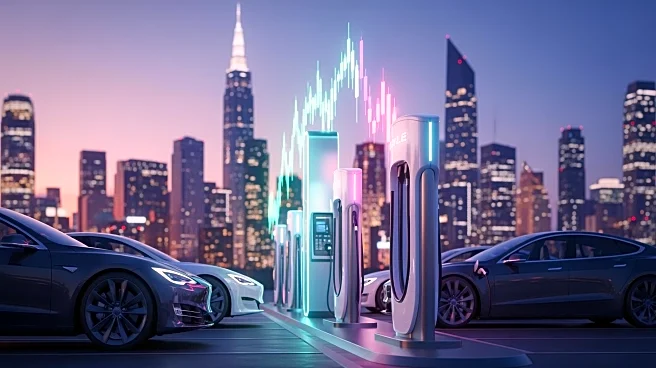What's Happening?
Nissan has introduced the all-new 2026 LEAF EV, marking a significant update to one of the pioneering mainstream electric vehicles in the U.S. market. The new model adopts a crossover compact SUV design,
inspired by the Ariya EV, while maintaining affordability with a projected starting price in the low $30,000s. Despite the design overhaul, Nissan aims to keep monthly payments similar to the current model. The 2026 LEAF will feature a front-wheel-drive configuration, offering an estimated 303-mile range from its 75-kWh battery, a substantial increase from the previous model. Additionally, it will include Tesla’s NACS inlet port for access to Tesla’s Supercharger network. However, the vehicle faces potential cost increases due to a 25% tariff on Japanese-built cars, which could add $7,500 to its price.
Why It's Important?
The launch of the 2026 LEAF EV is crucial for Nissan as it navigates financial difficulties, including a $4.6 billion net loss in fiscal 2024. The company is undergoing significant restructuring, with plans to cut 20,000 jobs and close several plants by 2027. The new LEAF is part of Nissan's strategy to release 10 new and updated vehicles in North America by 2027, aiming to regain market share and improve profitability. The vehicle's competitive pricing and extended range could attract buyers from competitors like Tesla, especially given the higher cost of the Model 3. However, the impact of tariffs and the absence of a trade deal between the U.S. and Japan could pose challenges.
What's Next?
Nissan will need to address the tariff issue to maintain competitive pricing for the LEAF in the U.S. market. The company is likely to continue lobbying for a trade agreement that could alleviate these additional costs. Meanwhile, Nissan's focus will be on ensuring the successful rollout of the LEAF and other upcoming models to stabilize its financial position and strengthen its presence in key markets like the U.S. and China.













